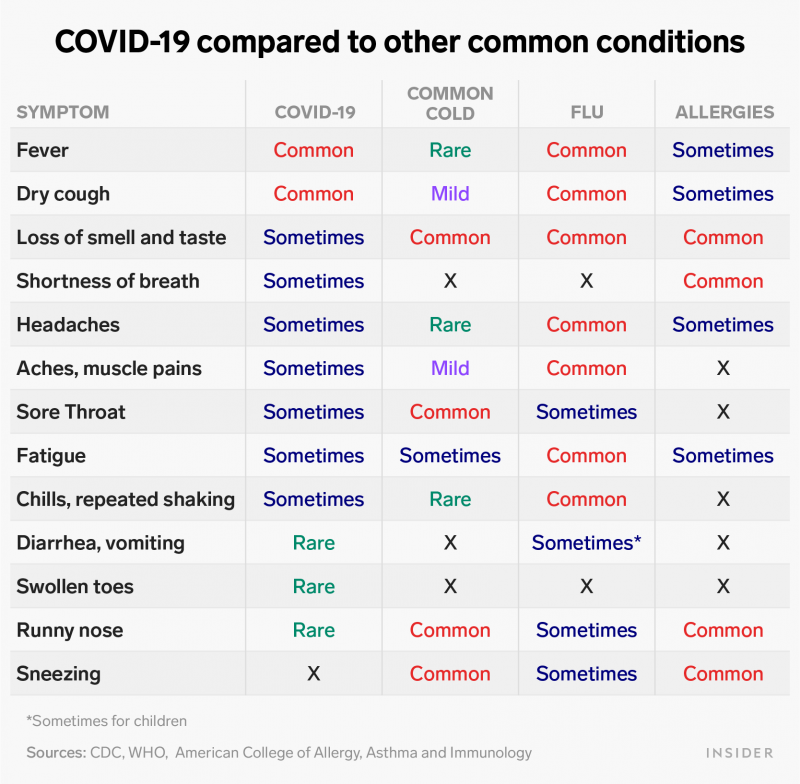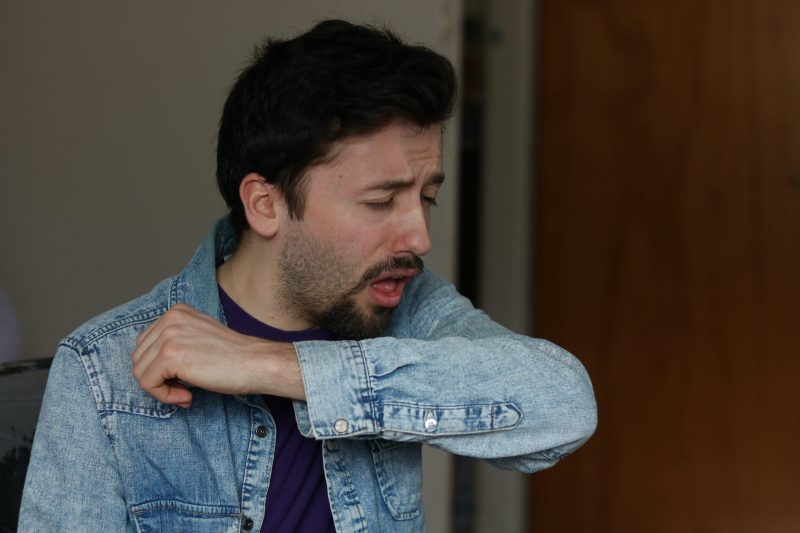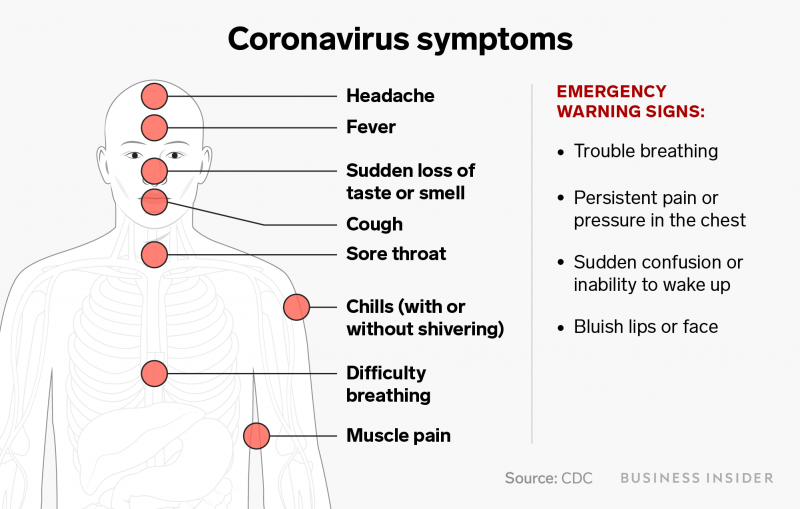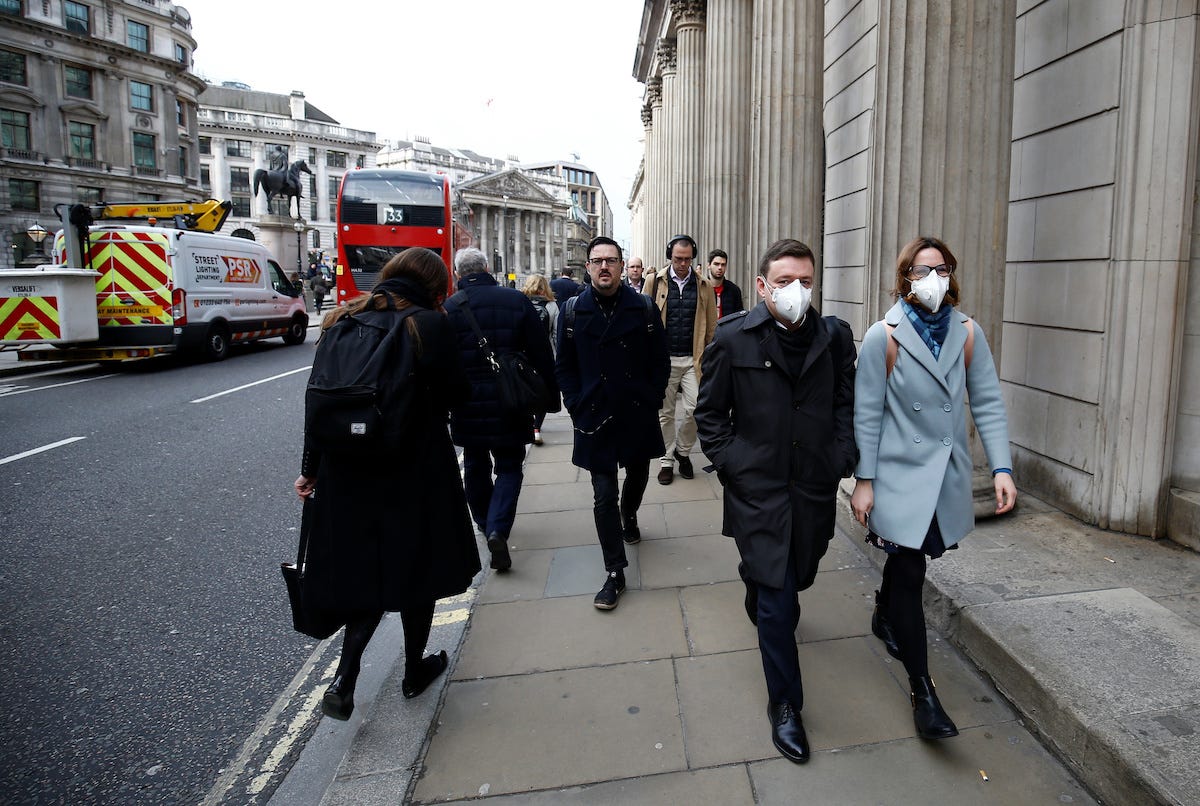- The flu, the common cold, allergies, and COVID-19 – the disease associated with the new coronavirus – can have similar symptoms.
- Overlapping symptoms include a dry cough, loss of smell or taste, and fatigue. That can make it challenging to diagnose COVID-19 without a test.
- But people with COVID-19 don’t typically sneeze and rarely have runny noses – symptoms most associated with colds and allergies.
- One chart shows how COVID-19 symptoms compare with those of the flu, allergies, and the common cold.
- Visit Business Insider’s homepage for more stories.
Some symptoms of COVID-19 overlap with those of the common cold, allergies, and the flu. That can make it tricky to diagnose without a test.
The coronavirus generally affects the lungs and commonly causes a fever and dry cough. Around 20% of patients develop shortness of breath, which doctors recognize as one of the most concerning symptoms. Other symptoms include fatigue, body aches, swollen toes, a sore throat, and gastrointestinal issues.
Here are the symptoms associated with COVID-19 and how they compare with symptoms of the common cold, the flu, and allergies:

If you're sneezing you probably don't have COVID-19
If you're sneezing, it's unlikely that you have COVID-19. A a runny nose is also more likely to be associated with a cold or allergies.
For many people, the arrival of spring brings allergies, which cause sneezing, congestion, itchy eyes, and shortness of breath.

But for COVID-19 patients, congestion only occurs in 4.8% of cases, according to a World Health Organization report that looked at about 56,000 Chinese patients. More common symptoms of the coronavirus include fever (in 87.9% of the cases studied), dry cough (67.7% of cases), and fatigue (38.1%).
Diarrhea and vomiting can also be signs of COVID-19 and may serve as early clues of infection, a growing body of research has found.
The overlap between symptoms of COVID-19 and those of other common conditions is in part why widespread testing is necessary. The US now has one of the highest testing-per-capita rates in the world, after an initially slow ramp up relative to other nations. As of Wednesday, more than 6 million Americans had been tested.
If you suspect you have the coronavirus, the Centers for Disease Control and Prevention (CDC) recommends that you contact your healthcare provider to arrange a test.
The CDC expanded its list of COVID-19 symptoms
When the new coronavirus was first identified in China, patients seemed to develop at least one of three symptoms: fever, a dry cough, and shortness of breath. The data was skewed, however, by the fact that most patients being tested for the virus had severe cases that required hospitalization.
As the virus has spread worldwide, doctors have reported additional symptoms among patients - including in more mild or moderate cases.
The CDC recently added three emergency warning signs and six health issues to its official list of COVID-19 symptoms. They include chills, repeated shaking with chills, muscle pain, headaches, sore throat, and loss of taste or smell. These symptoms usually appear two days to two weeks after exposure to the virus, according to the agency.

Some patients have reported additional symptoms as well, like fatigue and swollen toes that appear frostbitten.
Aria Bendix contributed reporting to this story.
